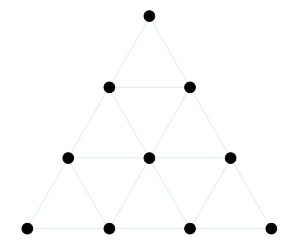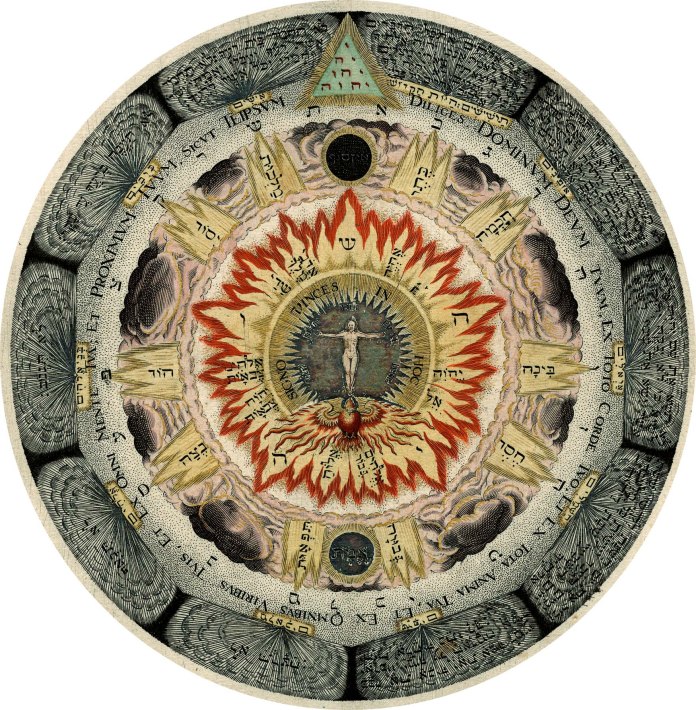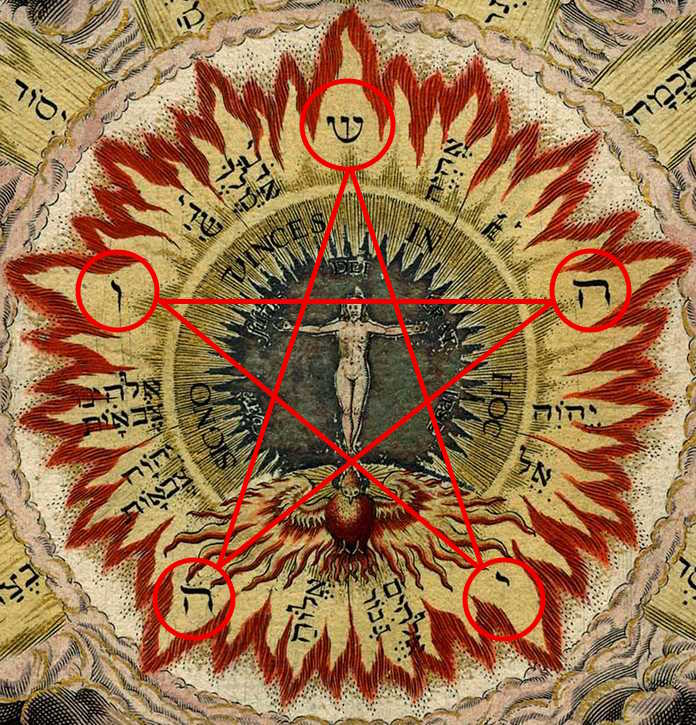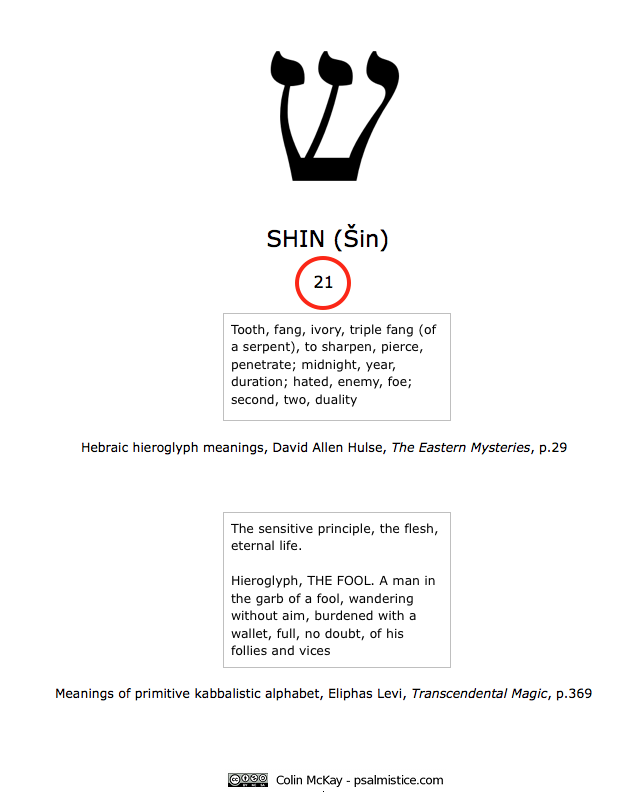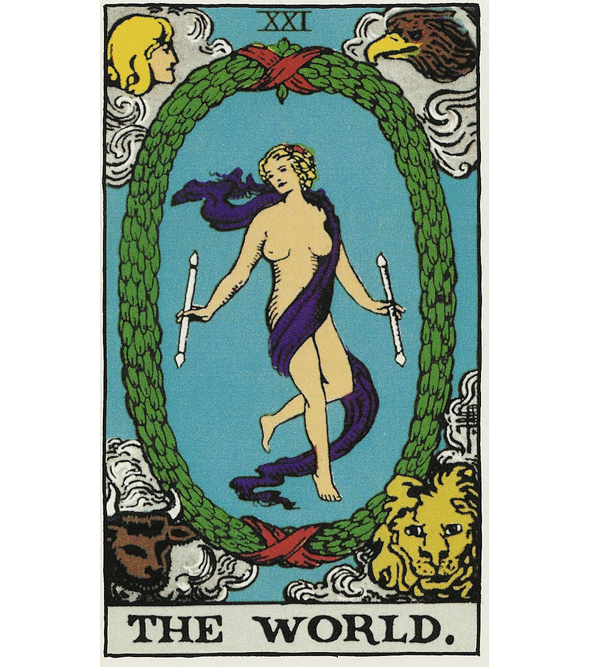Faust struck a chord in me and pierced me through in a way that I could not but regard as personal. Most of all, it awakened in me the problem of opposites, of good and evil, of mind and matter, of light and darkness.
The modern psychologist occupies neither the one position nor the other, but finds himself between the two, dangerously committed to ‘this as well as that’ (…) This is undoubtedly the great danger of the coincidentia oppositorum – of intellectual freedom from the opposites. How should anything but a formless and aimless uncertainty result from giving equal value to two contradictory hypotheses?
The connecting-link I was missing for so long has now been found, and it is alchemy.

Crystals of copper (II) sulphate
Which do you think is the worst Batman movie?
Featuring on many “Worst Ever” lists are Batman Forever (1995) and Batman and Robin (1997).
While they may indeed be terrible movies from the perspective of a film critic or a superhero afficionado, for a semiotician they are treasure troves of symbolic meaning.
Both were written by Akiva Goldsman,[4] and directed by Joel Schumacher.
Batman Forever (1995) was the last of the franchise entrusted to producer Tim Burton. His previous film, Batman Returns (1992), was accused of having anti-Semitic themes by two Ivy League Jews:
[He] “depicts the Penguin as one of the oldest cultural clichés: the Jew who is bitter, bent over and out for revenge, the Jew who is unathletic and seemingly unthreatening but who, in fact, wants to murder every firstborn child of the gentile community. [..] The Penguin feigns assimilation into society and gains the citizens’ trust for a time. But eventually even the ignorant masses understand this false prophet for what he is, a primordial beast who seeks retribution, ‘an eye for an eye.’”
[The Penguin] “is not just a deformed man, half human, half-Arctic-beast. He is a Jew, down to his hooked nose, pale face and lust for herring.”[5]
Their Op-Ed in the New York Times sparked quite the controversy. It was republished across the country, generating numerous commentaries and letters to the editor. One reader and fellow Columbia alumnus, who had initially dismissed their observations, changed his mind after seeing “this vile motion picture,” and wrote in “to add a few of my own”:
One of the Penguin’s chief underlings — whose duties include driving the train on which the Penguin hopes to cart off Gotham City’s first-born children — strongly resembles the stereotype of the haggling Jewish peddler, who holds nothing sacred save the making of a profitable deal. Certainly, Tim Burton’s vision of the Penguin, with hooked nose, absurdly bloated body and plutocrat’s attire, bears more than a passing resemblance to Nazi caricatures of manipulative Jewish financiers, down to the ghoulish, perverted lust for fair, fresh-faced gentile maidens.[6]
The Anti-Defamation League hotly denied the allegations; curiously, using only vitriolic ad hominem:
We are bewildered that you gave a major portion of the July 2 Op-Ed page to “Batman and the Jewish Question,” a bizarre and ludicrous pseudo-analysis of the allegedly anti-Semitic implications of the blockbuster movie “Batman Returns” — produced by the lurid and overheated imaginations of two college students. One suspects that what began as a satire for the campus newspaper took itself too seriously somewhere along the way. Students are often earnest, but unaware of their own limitations. [..] It should be left to the movie’s creators, if they so desire, to rebut the article’s many fatuous and overreaching analyses.[7]
Screenwriter Wesley Strick also responded, “as the lone Jew among director, producer and credited writer, and as the architect of the Penguin’s scheme to murder Gotham’s first born.” His putative refutation too is curious, both for its subtle admissions and for its absence of denials:
Some of the points by Rebecca Roiphe and Daniel Cooper are obvious — of course, I was referring to Exodus. Others are clever: the love of herring, parodic Wagner. Still, more metaphors seem a stretch: Penguin’s umbrellas and Moses’ magic staff? Alas, arguments are won by omission or distortion; for example, the “eye for an eye” line (in the movie, it’s “die for a die”) is spoken by Catwoman, whose subtextual meaning the authors oddly skirt.[8]
Need another red herring, Mr Strick?
In context of Tim Burton’s next (and last) Batman production, there are numerous reasons why all of this is noteworthy.
I propose that he redeemed himself – pun intended – with more than a little help from his friends, by producing a Batman Forever with comprehensively Cabalist themes.
Bear with me. Some background information is in order.
First, scholarly and encyclopaedic Jewish sources confirm the association of alchemy with the Jewish people “since ancient times.” Like the authors of ancient alchemical texts, some even claim the origin of the “Royal Art” is Jewish.[9][10]
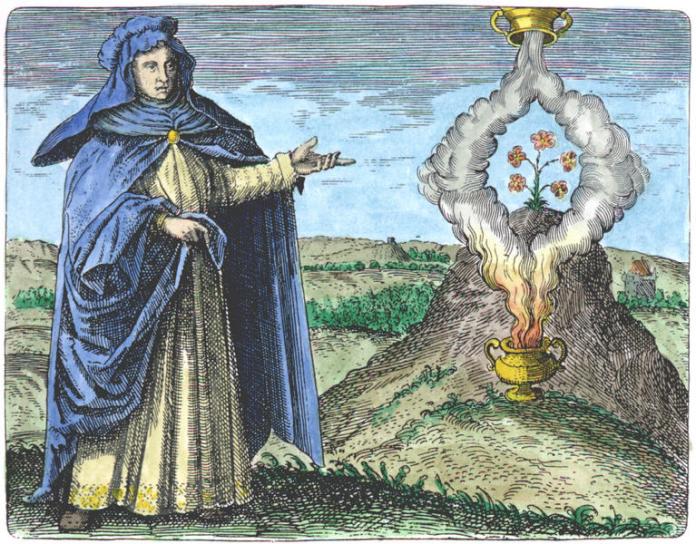
Maria Hebræa, from Michael Maier, Atalanta Fugiens: Emblemata Nova de Secretis Naturae Chymica, 1618. © Adam McLean 1997-2017 (alchemywebsite.com). Used with permission.
“Do not touch the philosopher’s stone with your hands;
you are not of our race, you are not of the race of Abraham.”
Second, the father of the “new science” of psychoanalysis, Sigmund Freud, fancied himself to be the folk-hero Messiah-ben-Joseph (“coat of many colours”, the interpreter of dreams), a militant warrior-king, redeemer, and martyr, who prepares the way for the messianic reign of the spiritual Messiah-ben-David :
Freud’s emotional identification with the military Messiah of the Jews catches in metaphor several critical aspects of Freud’s personality. The military Messiah, blessed by Moses, can violate one of the strongest taboos among the Jews, the commandment against killing, and the derivative taboo against thoughts of aggression which might involve bloodshed. Thus by participating in this image, Freud could feel free to indulge in thoughts of killing oppressors in a way which would have been otherwise traditionally closed. His ego could tolerate murderous thoughts. We need only remind ourselves of the great significance in Freud’s writings of death wishes directed against others, particularly the father, and its formulation in the fundamental paradigm of the Oedipus complex.
He refers to Oedipus as that mythical lawbreaker*. Evidently Freud conceives of the Oedipal crime as prototypal of all law breaking.
Freud plays the role of a new Moses who comes down with a new Law dedicated to personal psychological liberty.[11]
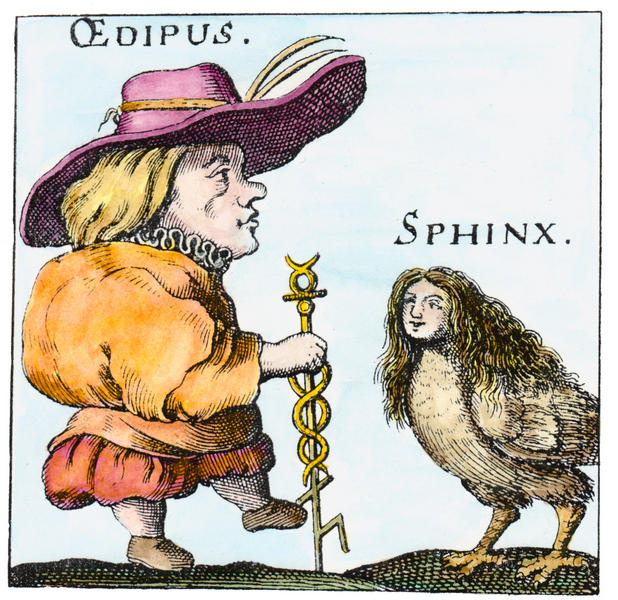
Frontispiece from J.J. Becher, Institutiones chimicae prodromae, Frankfurt, 1664. © Adam McLean 1997-2017. Used with permission
That Freud saw himself as an alchemical Messiah-ben-Joseph, ‘healing’ his people of their guilt, and conquering their enemies[12] – reducing them to Base Matter (Massa Confusa, “confused mass”) – is evident in his own words to his associates:
Do you not know that I am the Devil? All my life I have had to play the Devil, in order that others would be able to build the most beautiful cathedral with the materials that I produced.[13]
It is also evident in his “royal road to the unconscious” (1899) – a ‘scientific’ theory of the “dream-work”: mental transformations (condensation, displacement, representation), which supposedly unify the opposites of conscious and unconscious mind content (mind matter, the ‘Above’ and ‘Below’), by means of symbolism. Here we find a remarkable precursor to what Orwell described exactly fifty years later in his dystopian novel 1984 as doublethink – “a vast system of mental cheating”:
In The Interpretation of Dreams Freud describes the process by which “dream-thoughts” may be turned into their opposites.
Nor does Freud limit these considerations to dreams. In the same paragraph he goes on to tell how this technique of resolving elements into their opposites is also used in social dissimulation!
In his view, different and contradictory interpretations could be maintained simultaneously… .[14]
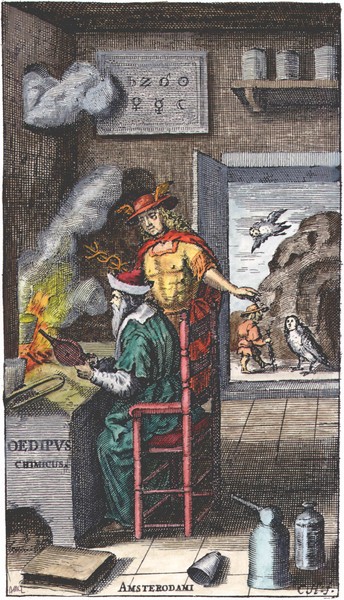
Frontispiece to J.J. Becher, Oedipus chimicus, Amsterdam, 1664 © Adam McLean 1997-2017. Used with permission
Freud’s double nephew, Edward Bernays – great grandson of the “leading monarch of the mind” of the Jewish world of his time[15] – became the (in)famous father of public relations (“Propaganda”) and thus, of modern “consumer culture” and the Century of the Self:
The conscious and intelligent manipulation of the organized habits and opinions of the masses is an important element in democratic society. Those who manipulate this unseen mechanism of society constitute an invisible government which is the true ruling power of our country.
There are invisible rulers who control the destinies of millions. It is not generally realized to what extent the words and actions of our most influential public men are dictated by shrewd persons operating behind the scenes.
Third, Jewish scholars have demonstrated that psychoanalysis is founded on the ontological mysticism and theurgy (practical ‘magic’) of Lurianic Cabala.[16]
Sefer HaKavanot U’Ma’aseh Nissim records that one day Luria’s father remained in the Beth kneset alone, studying, when Eliyahu HaNavi appeared to him and said, “I have been sent to you by the Almighty to bring you tidings that your holy wife shall conceive and bear a child, and that you must call him Yitzchak. He shall begin to deliver Israel from the Klipot [husks, forces of evil]. Through him, numerous souls will receive their tikkun [rectification, healing].”[17]
(Sound familiar? For Christians, it should. Read Luke 1.)
Freud’s theories on the human psyche are essentially those found in the Babylonian Talmud tractate Berakoth, wrapped in a ‘scientific’ re-presentation of the schema and quintessence of Isaac Luria’s cabalist mysticism – a metaphysics of (bi)sexual ‘alchemy’ between the father/mother/son/daughter ’emanations’ of Ein-Sof – with the antinomian tendencies of infamous 17th century false Messiah, Sabbatai Zevi.
It is one of the more important characteristics of psychoanalysis that it views evil as a distortion of love. This paradoxical identification of good with evil pervades all of Freud’s writings so that their classical polarity is virtually obliterated.
[T]he whole burden of psychoanalysis may be regarded as a fulfillment of the Sabbatian ethos.
In our century it has often been pointed out that modern science and psychoanalysis have seemed to “take the place of” religion. Modern psychoanalysis plays a “religious” role in people’s lives, especially with respect to their “sins” as sins are defined by the Mosaic code. The deepest violations of the Mosaic code – aggression, murder, sexuality, incest, etc – are the very subject matter of psychoanalysis. The psychoanalyst stands .. as a nonpunishing superego.[18]
As evidenced in his own words, so too are the theories of Freud’s estranged collaborator, Carl Jung, the promoter of transformative “individuation”, through rectification of the conscious/unconscious ‘opposites’.
The Cabala has been interpreted as a means of understanding the cosmos, the emanations of God, “the framework of practical magic,” but also as a psychological technique.
Lurianic Cabala was created by Isaac Luria (1534-1572) and, based on the Zohar, revitalised Cabala with the theory of tsimsum – God’s withdrawal from himself. This act was seen as a hierohistorical symbol of divine exile, implying that evil is an intrinsic creative force not solely attributable to humanity. The doctrine of shevirat-ha-kelim (breaking of the vessels) and tikkun (restoration) explained how evil is impermanent and called for humanity to restore perfection to the cosmos… . This is significant because of humanity’s active role in redemption; it called for Jews to be part of the cosmic process, interacting with the cosmic scheme and divinity itself, giving humankind divine potential. [..] Tikkun bears a very similar semblance to the alchemical idea of transmutation and Coudert draws a parallel between alchemist physicians and Cabalists in their role as creative and even redemptive agents, placing them heretically among the semi-divine.[19]
[T]hese ‘heretical’ Kabbalists believed that acts which benefit God included deliberate forays into the world of sin, where the illusory nature of evil could be more readily exposed, and the sparks thereby elevated to their Source.[20]
Fourth, Akiva Goldsman’s Jewish parents were child psychologists, who ran a group home for emotionally disturbed children. He says they were occupied with their work and “[b]y the time I was 10 or 12, I realized they had taken my parents away from me.” His scripts often deal with psychological themes, including Silent Fall (1994), and the Oscar-winning A Beautiful Mind (2001).[21]
Fifth, the creator of the Batman characters, Robert “Bob” Kane, was Jewish, as was his uncredited co-creator, Milton “Bill” Finger.[22][23]
Sixth, the plot, characters, and dialogue of Batman Forever are all based on alchemy, the principles of duality, unifying the opposites, and psychoanalysis.
Its female lead character – the lust/love interest and ‘healer’ of Batman/Bruce Wayne’s conflicted opposites – is a blue-eyed blonde psychologist, Dr. Chase Meridian.
The story-tellers’ many-faceted pun was clearly intended.
Batman Forever is deeply Cabalist, right from the opening credits.
From a total running time of 121 minutes, I have (so far) identified almost 60 clips – around 45 minutes in total – depicting cabalist and alchemical themes, all set within the central plot narrative of psychological duality and tikkun (“rectification”).
In Jung’s words, the “great danger” of the coincidentia oppositorum – of “intellectual freedom from the opposites” of good and evil, portrayed as a ‘divine’ superhero ideal.
[E]ssentially alchemy may be described as lying somewhere between science and religion and in contrast the Cabala may be seen as lying between religion and language. In this way both the Cabala and alchemy are ars liminæ, liminal disciplines.
Meridian chasers.
Exemplified by syncretic texts such as Voarchadumia (1550) Cabala and alchemy are comparable in their methods of manipulation; the former lexical, the latter elemental. The transmutation of letters to their prime state can be seen as parallel to the alchemical discipline of transmutation of metals to their base elements.[24]
In the opening credits, the colours assigned to the actors’ names are traditional alchemical symbols. They accurately reflect each actor’s character narrative, and covertly convey an eye-opening depth of multi-layered meanings.
These 44 seconds actually reveal The Key to decrypting the many interpretations of alchemy, Freud’s “new science” of psychology, and the antinomian, self-Deifying philosophistry of the Left-hand Path.
In all of their many disguises, ancient and ‘modern’.
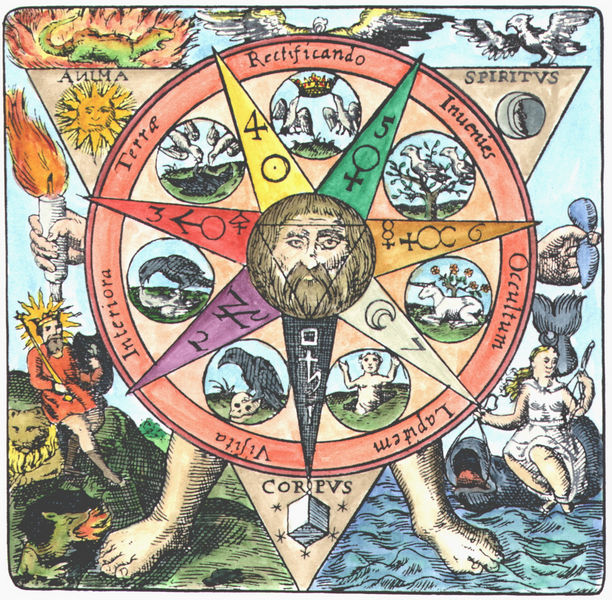
Basilius Valentinus, L’Azoth des Philosophes. © 1997-2017 Adam McLean (alchemywebsite.com). Used with permission.
Visita Interiora Terrae Rectificando Invenies Occultum Lapidem (VITRIOL): “Visit the interior of the earth and rectifying (i.e. purifying), you will find the hidden/secret stone”.[25]
1. Lead dominated by Saturn ♄ (![]() )
)
2. Tin dominated by Jupiter ♃ (![]() )
)
3. Iron dominated by Mars ♂ (![]() )
)
4. Gold dominated by Sol ☉ ☼ (![]() )
)
5. Copper dominated by Venus ♀ (also: ![]() )
)
6. Mercury (quicksilver) dominated by Mercury ☿ (![]() )
)
7. Silver dominated by Luna ☽ ( ![]() )
)
Would you like to know why VAL KILMER (Batman) is blue? Or why the credits for NICOLE KIDMAN and CHRIS O’DONNELL change colour?
If you are a Christian, you will be appalled. But not for the reason you may think (spiritually, it’s far worse, but that is not for today).
Here are four visual hints as to their respective ‘lθve’ union relationships and meanings – or what you might call their ‘Jungian’ Mysterium Coniunctionis.[26]
Think colour … and analogy. As quoth Éliphas Lévi, 19th century French occult magus and lord of the left-hand path:
Divination is .. an intuition, and the key of this intuition is the universal and magical doctrine of analogies. By means of these analogies, the magus interprets visions, as did the patriarch Joseph in Egypt, according to Biblical history. The analogies in the reflections of the astral light are as exact as the shades of colour in the solar spectrum, and can be calculated and explained with great exactitude.
To separate the subtle from the gross, in the first operation, which is wholly interior, is to set the soul free from all prejudice and all vice, which is accomplished by the use of the philosophical salt, that is to say, wisdom; of mercury, that is, personal skill and application; finally, of sulphur, representing vital energy and fire of will. By these are we enabled to change into spiritual gold things which are of all least precious, even the refuse of the earth.[27]
It will greatly help if you have read my essays on alchemy, banking, and ‘flow’-stealing sex ‘magick’ – Cheating Females (Part 1, Part 2).
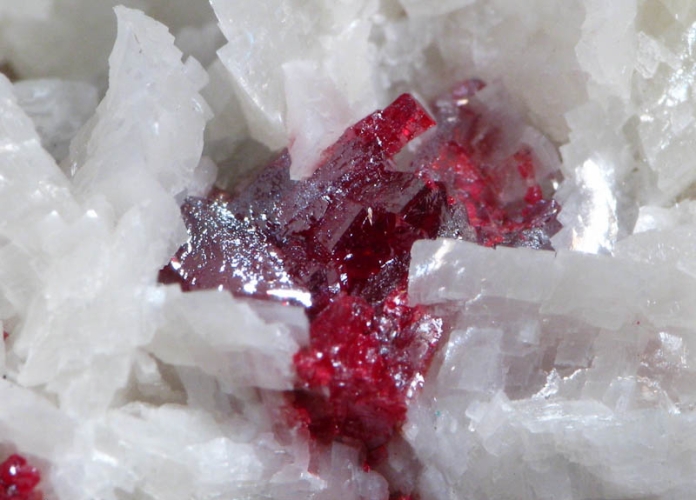
Come, my love, my dove, & pour
From thy cup the serpent wine
Brimmed & breathless -secret store
Of my crimson concubine
Surfeit spirit in the shrine-
Devil -Godess -Virgin -Whore.
– Aleister Crowley, Leah Sublime (1920)
Ponder thoughtfully the blue within its gold leaf ‘womb’ ▽ in the following emblem, found in the earliest illustrated alchemical text to be written in the German language, Buch der heiligen Dreifaltigkeit (“The Book of the Holy Trinity”). It has been attributed to a German Franciscan, Frater Ulmannus – a latinisation of the given name Ulmann, from Old High German uodal–man: Ancestral Man; the cabalists’ Adam Kadmon or Primordial Man.
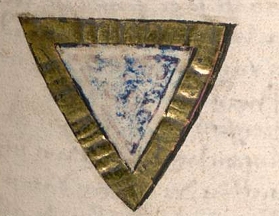
Buch der heiligen Dreifaltigkeit, late 15th Century MS (Munich, Bayerische Staatsbibliothek, CGM. 598). Source: Adam McLean, alchemywebsite.com
Think “blue blood” … and, “dragon’s blood.”
Consider the Antichrist, Diabolic, or Luciferic (i.e., Putrefaction) Rebis titled Contra Justiciam (“Against Justice”): a crowned, bat-winged[28] hermaphrodite; the conjunction of Hermes-Mercury and Aphrodite-Venus …
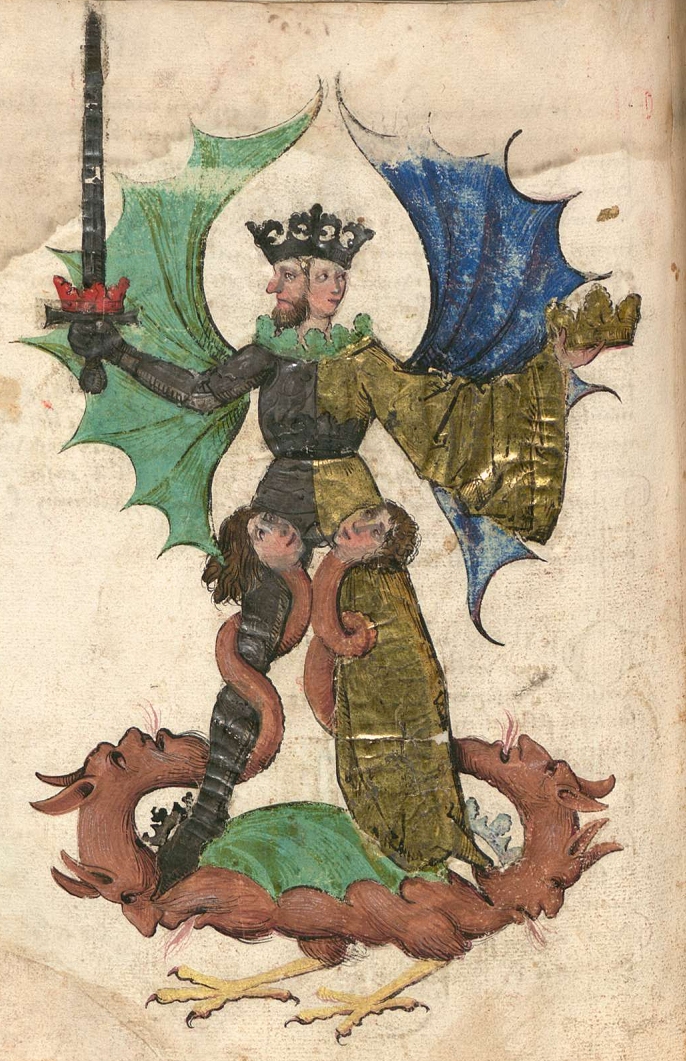
‘Contra Justiciam’ (Against Justice): A Crowned and Bat-winged Hermaphrodite, Buch der heiligen Dreifaltigkeit, late 15th Century (Munich MS, Bayerische Staatsbibliothek, CGM. 598). Source: Adam McLean, alchemywebsite.com
Note that the male’s (right side; left for viewer) armour is not black, but rather silver leaf that has tarnished with age. There are seven different coloured crowns on the body of the hermaphrodite: at the head (silver), chest (green), belly (black), right hand (red), left hand (gold), right foot (black) and left foot (grey). The colours vary in different manuscripts; each crown has been identified with one of the seven deadly sins.
Compare with the next emblem, the now-transformed Mercurial Rebis, crowned with a six-pointed star. The two streams flowing from the ‘stones’ at the hermaphrodite’s feet to the hills from which grow the Solar Tree and Lunar Tree, are known as “Oil of the East” (male side) and “Oil of the West” (female side).

The Mercurial Rebis: A Crowned and Bat-winged Hermaphrodite, Buch der heiligen Dreifaltigkeit, late 14th Century (Munich MS, Bayerische Staatsbibliothek, CGM. 598). Source: Adam McLean, alchemywebsite.com
Alas, for a more detailed explanation – in particular, of the metallurgical and spiritual transformations that are symbolically depicted, and far more importantly, secreted, in accordance with the Talmudic-Cabalist ‘law of inversion,’ we must wait for a future essay.
Or rather, a series of essays. In setting out to expound the opening credits sequence alone, dear reader, I failed to foresee the enormity of the task. After some 4,400 words had barely scratched the surface of just three colours, it became clear that a lengthy series of essays – or indeed, a book or three – is required in order to adequately expound the alchemical-Cabalist significance of the entire movie.
I must confess that the prospect of labouring to do so inspires many misgivings.
What I have presented in this essay, is barely the tip of the iceberg.
Having spent over two weeks on identification and editing of clips, and the compiling of 10,000+ words in notes and references, the growing enormity of the task weighs heavily. In consideration of the miniscule readership of this blog, I am compelled to question if the effort to explain the many, evidentially-connected layers of meaning – retracing 2700 years of world history, to Sumero-Assyrian word lists of then-known chemical compounds – would truly represent a worthwhile expenditure of my life energies.
Just as the Devil is said to have tempted Jesus in the wilderness, using the philosophistry of cunning, willful mis-contextualisation of Hebrew scripture, in another classic proof that gemstones of truth can sometimes (but not always!) be found concealed within mountains of ‘clever’ lies, a famous aphorism of nihilist philosopher Friedrich Nietzsche (The Antichrist), from his lauded Beyond Good and Evil, fits well with my own personal experience of recent weeks in researching this topic:
He who fights with monsters might take care lest he thereby become a monster. And when you gaze long into an abyss, the abyss also gazes into you.[29]
To slowly have one’s eyes opened to the sheer scale, the almost unbelievable breadth depth and height, of eloquent, malevolent, systemic deception, whose continuity can be traced back over many millennia; to understand the base simplicity of the system – lying, by punning, to the ear and to the eye – and thus, to sense more deeply the non-necessity of suffering, oppression, theft, and murder of billions of human souls over those æons in direct consequence, is truly to gaze into an abyss, and to feel one’s spiritual energies drain away beneath clouds of despair at the futility of one’s own efforts to bring any redress, or even to meaningfully assist in slowing the ‘progress’ of humanity’s acceleration down the Left-hand Path into that abyss.
In recent weeks I have felt increasingly impressed that while exposing the works of darkness continues to be a necessary task, what is more urgently necessary still – at least for me – is to assign a greater proportion of one’s days to looking on the true light.
And so, in consideration of this, I leave for you now a montage of (mostly) narrative clips from Batman Forever, in illustration of what I have written above. A spoiler alert: do not watch if you would prefer to see the movie in its entirety.
In a similarity to a central character in the film – an irony that is far from being lost on me – I too am of two minds, on the question of further elaboration of this research in a series of future essays, or, the retention of it, with a view to a published volume/s in future.
In light of my deeper, spiritual preference, I have made a point of leaving abundant clues here for readers to research further and discover the correct conclusions; both in the text and images chosen, and of course, in my selection of clips for the montage.
If you have found this essay of value to you, I would sincerely appreciate your sharing it with others.
I would also appreciate your leaving feedback, ideally here in Comments, or at my Twitter account @DerorCurrency, as this would help me to gain some insight into the extent of readers’ desire for further elaboration on the Batman Forever theme.
**************
REFERENCES
[1] Jung, C.G. Memories, Dreams, Reflections, New York: Random House (1961), p. 235, cited in Henderson David, The Coincidence of Opposites: C.G. Jung’s Reception of Nicholas of Cusa, (2010), Studies in Spirituality 20, 101-113
[2] Jung, C.G. Collected Works, H. Read ed., New York: Pantheon (1953-79), Volume 8 p. 679, cited in Henderson, David, The Coincidence of Opposites: C.G. Jung’s Reception of Nicholas of Cusa, (2010), Studies in Spirituality 20, 101-113
[3] Jung, C.G. 1973, vol. 1, p. 206, cited in Drob Samuel L., Towards a Kabbalistic Psychology: C.G. Jung and the Jewish Foundations of Alchemy
[4] Batman Wikia – “[Lee Batchler] met producer Tim Burton and together they agreed that the screenplay should have focus on the duality of Batman. The Batchlers were hired by Burton and new director Joel Schumacher [..] The final script was revised by Akiva Goldsman…”
[5] Hamilton, Andrew, Batman Returns: An Anti-Semitic Allegory?, Counter-Currents, June 2012. (accessed 27 Feb 2018)
[6] Corwin, Nicholas, Anti-Semitism in ‘Batman Returns’? Be Serious; Gratuitous Bigotry; Opinion, The New York Times, July 20 1992. (accessed 27 Feb 2018)
[7] Salberg, Melvin, & Foxman, Abraham H., Anti-Semitism in ‘Batman Returns’? Be Serious; Opinion, The New York Times, July 20 1992. (accessed 27 Feb 2018)
[8] Strick, Wesley, Anti-Semitism in ‘Batman Returns’? Be Serious; Who’s Really Divisive?; Opinion, The New York Times, July 20 1992. (accessed 27 Feb 2018)
[9] Drob, Samuel L., Towards a Kabbalistic Psychology: C.G. Jung and the Jewish Foundations of Alchemy; citing Patai (1994), Suler (1972), Idel (2000), et al.
[10] Patai, R., 1994, The Jewish Alchemists, Princeton Univ. Press, Princeton, p. 76; cited in Vladimír Karpenko, Alchemy as donum dei, HYLE, International Journal for Philosophy of Chemistry, Vol. 4 (1998), No. 1, pp. 63-80; — “In the Hellenistic world particular attention should be paid to Mary the Jewess, one of the most influential personalities of this science. God appears in connection with her, but in a slightly different manner than later. To Mary, alchemy is donum dei, a gift of God; but this gift was given only to ‘chosen people’, Jews. She is reported to have said: “Do not touch the philosopher’s stone with your hands; you are not of our race, you are not of the race of Abraham.’* Thus alchemy was not for alchemists in general, but for the race of Abraham. Alchemy is presented here as the spiritual property of Jews. As pointed out by Patai, the singular form ‘God’ is used strictly in texts attributed to Mary, and this claim that alchemical secrets were revealed to her by God became a part of the medieval alchemical tradition about her.”
[11] Bakan, David, Sigmund Freud and the Jewish Mystical Tradition, New York: D. Van Nostrand Company Inc (1958), Chapters 21-22, pp. 160, 165, 167, 168, 170, 169-183; * p.165, footnote 7: Freud, Col. Papers, IV, p. 383 – In Moses and Monotheism, he refers to the murder of Moses as “the murder of the Father.” (p.165). Freud admitted to selectively choosing what suited him from various scholars’ Biblical analyses, some of whom postulated that Moses was murdered (e.g., Sellin, Robertson Smith). Bakan writes: “The actual evidence for the murder of Moses is very tenuous, but the murder of Moses is something which Freud must assert as fact. What he is doing is projecting a current fantasy onto a past situation, which is done in all mythmaking. It is Freud who wishes that Moses were murdered… Jacob Frank’s assertion that the Torah was dead, Freud repeats with psychoanalytic sophistication.”
“In his writing, Freud frequently did refer to the significance of his own Oedipus complex. Furthermore, he made the infantile relationship of the child to his parents the critical feature in the analysis of human personality. Besides this we find frequent identifications in Freud’s writings of father and God, father and Moses, and father and superego.” (p.165)
“Hence it is necessary for Freud to kill Moses. [..] ..the Moses of Freud’s murder is the Moses each person carries about with him. And in this too he identifies himself with all Jewry. For in his fantasy he is not alone in the murder. The myth he fashions is not of one person murdering Moses. It is a murder which is committed collectively by all Jews.” (p. 167)
“The Jews, because of their endogamy, characteristically had an incest problem, and part of the role of Jewish mysticism was to provide devices for coping with the intense feelings of guilt associated with incest wishes.” (p. 292)
“Thus by writing this book, Freud becomes a Jewish hero in the history of the Jews. He performs the traditional Messianic function of relieving guilt, the very same function he ascribes to Jesus.” (p.168)
“That psychoanalysis should have grown up in the context of the healing of the sick who were incurable by orthodox medical means accords with the Messianic quality of the psychoanalytical movement. For Messianism characteristically proves itself first by miraculously healing the sick. Thereafter it reaches out to large-scale social reform.” (p.170)
[12] Sepehr, Robert, 1666 Redemption Through Sin: Global Conspiracy in History, Religion, Politics and Finance, Atlantean Gardens. Kindle Edition, p. 12, citing Scholem, Gershom, The Messianic Idea in Judaism: And Other Essays on Jewish Spirituality, (NY: Schocken, 1971) – “Mystical Lurianic speculations about the nature of the redemption, and the ‘restored world’ (olam ha-tikkun) which follow upon its heels, added new content and dimensions to the popular messianic folk-myth of a conquering national hero, raising it to the level of a supreme cosmic drama.”
[13] Bakan, David, Sigmund Freud and the Jewish Mystical Tradition, New York: D. Van Nostrand Company Inc (1958), Chapter 22 Freud’s Messianic Identification, p. 181, citing Laforgue, R, “Persönliche Errinerungen an Freud,” Lindauer Psychothereapiewoche (1954), pp. 42-56
[14] ibid., pp. 146-147, 262 – “There is yet another alternative in which the dream-work can deal with affects in the dream-thoughts, in addition to allowing them through or reducing them to nothing. It can turn them into their opposite. We have already become acquainted with the interpretive rule according to which every element in a dream can, for the purposes of interpretation, stand for its opposite just as easily as for itself. … We can never tell before-hand whether it stands for the one or for the other; only the context can decide.” (Freud, The Interpretation of Dreams, p. 471)
[15] ibid., p. 57 – “Freud’s intimate association with the Bernays family may also be significant. Rabbi Isaac Bernays of Hamburg had been called the ‘leading monarch of mind’ for the Jewish world at his time. He is described as ‘a queer and eccentric personality and his philosophy of Judaism was full of mystic vagaries, some of which were contrary and foreign to the true Jewish spirit.’ As we shall see later, the mystical mood often spilled over into apostasy. As a possible instance of this trend, it should be noted that Isaac Bernays’ son Michael, uncle of Martha [Freud’s wife], was converted to Christianity. Freud’s sister married Martha’s brother; and Martha’s sister, Minna, lived in the Freud household for many years and evidently provided Freud with assistance in his work and also moral support.”
[16] ibid. Chapters 9-10, 31-33 (Part V Psychoanalysis and Kabbala); see also Drob, Sanford L, “This is Gold!”: Freud, Psychotherapy and the Lurianic Kabbalah. – Besides its singular emphasis on sexual and family relationships, the Zohar shares with Freud’s psychoanalytic writings the following characteristics: views on anti-Semitism, the conception of man as bisexual, a theory of sexual-social development, and, perhaps most important, a set of techniques for the interpretation of linguistic productions. (Bakan, p. 84)
[17] Wikipedia, citing safed-kabbalah.com (web archive copy, accessed 27 Feb 2018)
[18] Bakan, David, Sigmund Freud and the Jewish Mystical Tradition, New York: D. Van Nostrand Company Inc (1958), Chapters 14-15, 20, pp. 105, 158 – “From time to time events occur in which a vast variety of social forces come to a focal point, and the meaning and implications of these events are active for centuries forward. The appearance of Sabbatai Zevi was such an event. The set of events which surrounded the personality and acts of Sabbatai Zevi, the “false Messiah,” was of the deepest moment for the psychological and emotional patterns of the Jews in the modern period. Sabbatai Zevi may have been a psychotic, as Scholem suggests. He may have been a homosexual, and a confirmed egoist as is suggested by Kastein. The fact remains that to the Jews of the world, he was for a time the Messiah. The Kabbala..had prophesied that the year 1648 would begin the Messianic era. It was also the year of the great Chmielnicki pogrom. With the pre-existence among the Jews of a strong Kabbalistic ideology, particularly of the Lurianic type with its intense Messianism, the suffering and the devastation of that year were interpreted paradoxically as confirmation of the coming of the Messiah. The pogroms were, presumably, the cleansing in preparation.” [..] “Since the year 1648 had failed to produce the redemption, Sabbatai Zevi placed his faith on another year which, paradoxically, had a source quite different from Jewish Kabbala. Sabbatai Zevi had heard from his father, who was an agent for an English firm, that some Christian calculation, based on the Book of Revelation, had assigned 1666 as the beginning of the Millennium. The year 1666 was now the redemption year.” (p.95, 97-98)
See also Sepehr, Robert, 1666 Redemption Through Sin: Global Conspiracy in History, Religion, Politics and Finance, Atlantean Gardens. Kindle Edition, p. 3, citing Scholem, Gershom, The Messianic Idea in Judaism: And Other Essays on Jewish Spirituality, (NY: Schocken, 1971), and Chamish, Barry. Shabtai Tzvi, Labor Zionism and the Holocaust. (Modiin House: 2005) – “The ‘magical’ emphasis given to the numerological value of dates contributed greatly to the widely held expectations and hope placed on the coming of a Messiah at the time of Sabbatai Zevi’s advent, the 18th day (6+6+6), of the 6th month, of the year 1666.”
[19] Garrard, Samuel, The Syncretic Esotericism of the Renaissance: Historical and Thematic Congruencies in Cabala and Alchemy, pp. 3-4, 7 – “The magical implications of this are evident in the popularity and controversy that surrounded the Cabala in the preceding centuries. Allison P. Coudert, professor of Religious Studies at the University of California, discusses the specific restorative and salvational role of this activist Cabalism as comparable with the art of alchemy and contributory to the “Rosicrucian Enlightenment” as explored by Frances Yates (1899-1981).”
“[Gershom] Scholem asserted that the Lurianic Cabala, with its messianic or utopian dimension, was the driving force behind the Sabbatian movement which was formative of secular, reformative Judaism that followed and was ‘one of the most powerful forces ever to affect the inner development of Judaism, both horizonatally and in depth.’ [Kabbalah, p. 190] The Cabala was directly responsible for the abolishment of the halakhah law. In seeking to reveal paradoxically ‘what is by definition hidden,’ the followers of the Cabala performed their own act of transmutation by transforming a dogmatic law to a symbolic one.”
“The theme of potentiality, borne by both Lurianic Cabala and alchemy, stood in opposition to the Christian doctrine of the fall and original sin and provides a link with the tradition that began with the translation by Marsilio Ficino (1433-1499) and Lodovico Lazzarelli (1447–1500) of the Corpus Hermeticum originally written in the second and third centuries AD. The theme of Hermetic potentiality is apparent in the monadic tradition and, rooted in the approach of medieval alchemy and strengthened in the fifteenth and sixteenth centuries. Frances Yates proposed the theory that this divine potentiality in the individual human was responsible for the confidence and determinism behind the enlightenment and scientific thrust that was to follow.”
“Coudert provides further speculation on Frances Yates’ theory that Hermeticism and Renaissance occult philosophy provided the sine qua non for modern science… . One can detect in Hermetic texts, alchemy, Cabala (in particular Lurianic Cabala) and in Neoplatonism a ‘monadic Gnosis;’ a Gnosticism with no mediator between humanity and God. Cabala and alchemy were formal means by which one could interact direct with God.”
[20] Sepehr, Robert, 1666 Redemption Through Sin: Global Conspiracy in History, Religion, Politics and Finance, Atlantean Gardens. Kindle Edition, p. 13, citing Antelman, Rabbi Marvin, To Eliminate the Opiate (Volume 2), The Zionist Book Club: 2002
See also Bakan, David, Sigmund Freud and the Jewish Mystical Tradition, p.101 – “Scholem advances an interesting hypothesis which is particularly relevant to our interest in Freud. Scholem holds that Sabbatianism .. passes into a rationalism which tends to conceal its Sabbatian origins [original italics]. After the French Revolution, it was the Sabbatians within the Jewish fold that fostered the movements [in the Jewish world] toward reform, liberalism, and the enlightenment. Sabbatianism articulated with rationalism in several ways. For one thing, although Sabbatianism had its own collection of myths, it was opposed to the myths of orthodoxy. For another, the Sabbatians held to a doctrine of the necessity of the descent into evil in order to attain spiritual liberation, a doctrine which was endowed with specific sexual reference by the Frankists… The ‘holiness’ of participating in all things, evil or non-evil, already contains a harbinger of the more enlightened view of pursuing truth no matter where it might lead, with full confidence that ‘truth’ must lead to good. But perhaps most important is the fact that Sabbatianism, as a form of mysticism, shares with rationalism the conviction that the world of reality, all reality, may be apprehended by, and encompassed by thought.”
[21] Akiva Goldsman, Wikipedia, and Akiva Goldsman, allmovie.com. (accessed 27 Feb 2018)
[22] Bob Kane, Wikipedia, citing Irish Independent (“Holy sunflowers! How Batman drove Van Gogh out of Gotham”), March 20, 2010, and Bloom, Nate, Cleveland Jewish News (“Jewish Stars”), July 18, 2008. (accessed 27 Feb 2018)
[23] Weinstein, Rabbi Simcha, A Jewish ‘Joker’: From the Catskills to Gotham City, New Jersey City News, July 24, 2008, (web archive) and Bill Finger, Wikipedia. (accessed 27 Feb 2018)
[24] Garrard, Samuel, The Syncretic Esotericism of the Renaissance: Historical and Thematic Congruencies in Cabala and Alchemy, p. 8, and p. 11 citing Françoise Bonardel, Alchemical Esotericism and the Hermeneutics of Culture, in Modern Esoteric Spirituality, pp. 71-100 (p. 92) – Note carefully the “transmutation of letters to their prime state .. as parallel to the alchemical discipline of transmutation of metals to their base elements.. ,” echoed in Lurianic Cabalist philosophy, particularly in its Sabbatian interpretation: the kellipot (husks of evil) being analogous to the alchemists’ Prima Materia (“First Matter”, “Base Matter”) or Massa Confusa (“confused mass”) – there are over one hundred synonyms.
[25] Stolcius, Daniel (ie, Daniel Stolz von Stolzenberg), Theatrum Chymicum, 1614
[26] Theta, Wikipedia. (accessed 27 Feb 2018) – “lθve”: the Greek letter Theta (θ) is the eighth letter in the Greek alphabet, derived from the Phoenician letter Teth ![]() . In its archaic form, θ was written as a cross within a circle (as in the Etruscan
. In its archaic form, θ was written as a cross within a circle (as in the Etruscan ![]() or
or ![]() ), and later, as a line or point in circle (
), and later, as a line or point in circle (![]() or
or ![]() ) – i.e., the alchemists’ symbol of the Sun (Sol); interpreted by medieval- through Enlightenment-era cabalists seeking to syncretise Jewish mysticism with Christian theology as a symbol of the Son of God, Jesus the Christ (Messiah), divine representative of “love”. In left-hand path lore, Sol
) – i.e., the alchemists’ symbol of the Sun (Sol); interpreted by medieval- through Enlightenment-era cabalists seeking to syncretise Jewish mysticism with Christian theology as a symbol of the Son of God, Jesus the Christ (Messiah), divine representative of “love”. In left-hand path lore, Sol ![]() is interpreted sexually: as the phallus, and/or, the phallus (point) within the female or male orifice/s (circle).
is interpreted sexually: as the phallus, and/or, the phallus (point) within the female or male orifice/s (circle).
[27] Lévi, Éliphas, Transcendental Magic: Its Doctrine and Ritual, London: George Redway, A.E. Waite transl. (1896), pp. 107, 162-163
Compare Foxbrunner, Dr Roman A., Habad: The Hasidism of Schneur Zalman of Lyady, New Jersey, Jason Aronson Inc, (1993) pp. 108-109, quoting the founder of the Chabad-Lubavitch chassidic sect, Rabbi Schneur Zalman (1745 – 1812) – “Gentile souls are of a completely different and inferior order. They are totally evil, with no redeeming qualities whatsoever… Their material abundance derives from supernal refuse. Indeed, they themselves derive from refuse, which is why they are more numerous than the Jews… . According to Rabbi Zalman, ‘All Jews were innately good, all gentiles innately evil… For RSZ (Rabbi Schneur Zalman) … gentiles were simply the embodiment of the kelipot…”
[28] McLean, Adam, Pandora series, alchemywebsite.com (accessed 24 Feb 2018). Note that the Hebrew word “bat” (עֲטַלֵּף`atalleph) is a word used for a “daughter”. The bat (flying in the dark) is “reckoned among the birds in the list of unclean animals [Leviticus 11:9, Deuteronomy 14:18]. To cast idols to the ‘moles and to the bats’ means to carry them into dark caverns or desolate places to which these animals resort (Isaiah 2:20: In that day people will throw away to the moles and bats their idols of silver and idols of gold, which they made to worship.).” According to Hoffman (Secrets of Judaism Revealed on Purim), rabbis claim that “bat” (daughter) actually means “bayit” (home), a euphemism for “wife”.
The Jewish demon/ess and feminist icon, Lilith – whom we have met before – is often depicted with bat’s wings. Compare the Book of Revelation (chapter 17) on the Great Whore and Mother of Harlots.
[29] Nietzsche, Friedrich Wilhelm, Beyond Good and Evil, 1886, Aphorism 146, Hollingdale transl., Wikiquote.org via Gutenberg-DE. (accessed 1 March 2018)




